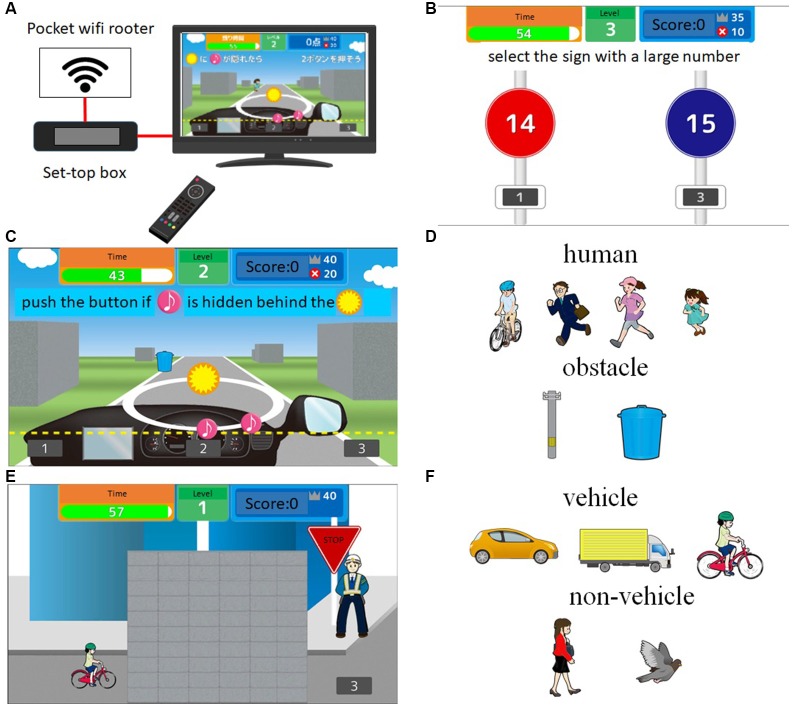Figure 2.
Example of cognitive training games for car driving (CTCD). (A) Summary of the intervention setting using the TV and set-top box. (B; processing speed training) Two signs with two numbers are presented on the TV screen. Then, participants are asked to select the sign with the large number as quickly as possible (B). In the case shown in (B), the sign on the right is the correct choice. (C,D; dual attention training) Participants are asked to perform two tasks simultaneously. For the first task panel (C), the stimulus (pink musical notes) moves along a circle. Then, participants are asked to push the button if the stimulus is hidden behind the mark (orange circle with a yellow star). For the second task, when a target (human or obstacle, see D) is approaching, participants are asked to push the button as quickly as possible if the target is human or not push the button if the target is an obstacle. In the case presented in (C), participants do not push the button because the target is an obstacle. (E; speed prediction) A target (vehicle or non-vehicle, F) is moving through the wall from left to right on TV monitor. Participants are asked to push the button when the target comes out from the wall, but not push the button if the target is a non-vehicle.

